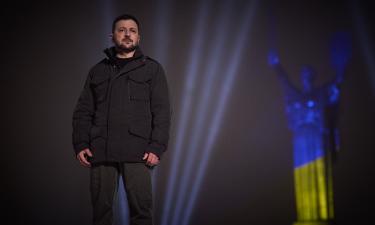Lasker Prize Awarded to Stem Cell Scientists
The Lasker Award, one of the most prestigious prizes in medicine is being awarded this year to scientists working on stem cells and leukemia.
The Lasker Awards have been given since 1945. They honor the contributions of scientists, physicians and public servants internationally working to cure and prevent disease.
"It's right up there with the Nobel Prize," says Gary Sieck, a research director at the Mayo Clinic, Rochester, Minn. "The people who get it are at the top."
The Lasker-DeBakey Clinical Medical Research Award goes to three scientists whose turned a fatal cancer, myeloid leukemia, into a manageable condition with their discovery of the drug Gleevec (imatinib mesylate).
Brian Druker, 54, of Oregon Health & Science University, Nicholas Lydon, 52, formerly of the Novartis pharmaceutical company, and Charles Sawyers, 50, of Memorial Sloan-Kettering Cancer Center did the work in the 1990s. The drug inhibits the protein made by an abnormal gene that causes this form of leukemia. Further research was able to stop resistance to the drug in some patients.
When the first results of preliminary tests came in, in 1999, "almost everyone had some form of response, either a complete or partial remission. In a Phase 1 study you never see that," says Sawyers. "Now it seems like such a logical approach, but at the time it had never been done."
- Being awarded the prize is "an incredible badge of respect and honor," he says, USA Today reports.
It was also reported, the Lasker Awards include a cash prize of $250,000 for each category and often preview the Nobel Price. In the 63-year history of the Lasker prizes, 76 winners also have won a Nobel. The Lasker Foundation was created in 1942 by advertising executive Albert Lasker and his wife Mary, a health advocate.
Gurdon and Yamanaka share the award for the category of basic medical research. In the late 1950s, Gurdon, now 76, overturned conventional wisdom by showing that cell development isn’t always a one-way process in which cells go from embryo cells, able to become any other cell type, to unchangeable cells like muscle or nerve cells.
“The prevailing thought was that as cell differentiate, they lose their ability to generate other cells of any kind,” Gurdon said in a Sept. 11 telephone interview.
- Gurdon took cells from an adult frog’s gut, inserted the nucleus into an egg cell whose own nucleus had been removed, and created a tadpole with the genetic characteristics of the original frog. His work showed that the adult cells retained the ability to become other cells and that the egg had the power to reawaken those properties. It paved the way in 1996 for the cloning of Dolly the sheep and, 10 years later, for Yamanaka’s work, Bloomberg reports.
In the meantime,Yamanaka’s finding is significant scientifically as well as politically.
So-called induced pluripotent stem, or IPS, cells could lead to therapies or cures for everything from spinal cord injuries to diabetes. They also could be used to help pharmaceutical companies screen drugs.
The technology is central to the business models of a handful of companies, including South San Francisco’s iPierian Inc., which is focusing on culling IPS cells for treatments for neurodegenerative diseases like Parkinson’s or Lou Gehrig’s disease.
- The method also could sidestep the politically sensitive issue of destroying embryos to create stem cell lines, which anti-abortion activists and many religious conservatives have opposed. But reprogrammed stem cells also could express genes that cause cancer, and scientists are continuing to work through those and other issues that could limit IPS cells’ use in humans, Bizjournals.com reports.
Subscribe to Pravda.Ru Telegram channel, Facebook, RSS!




